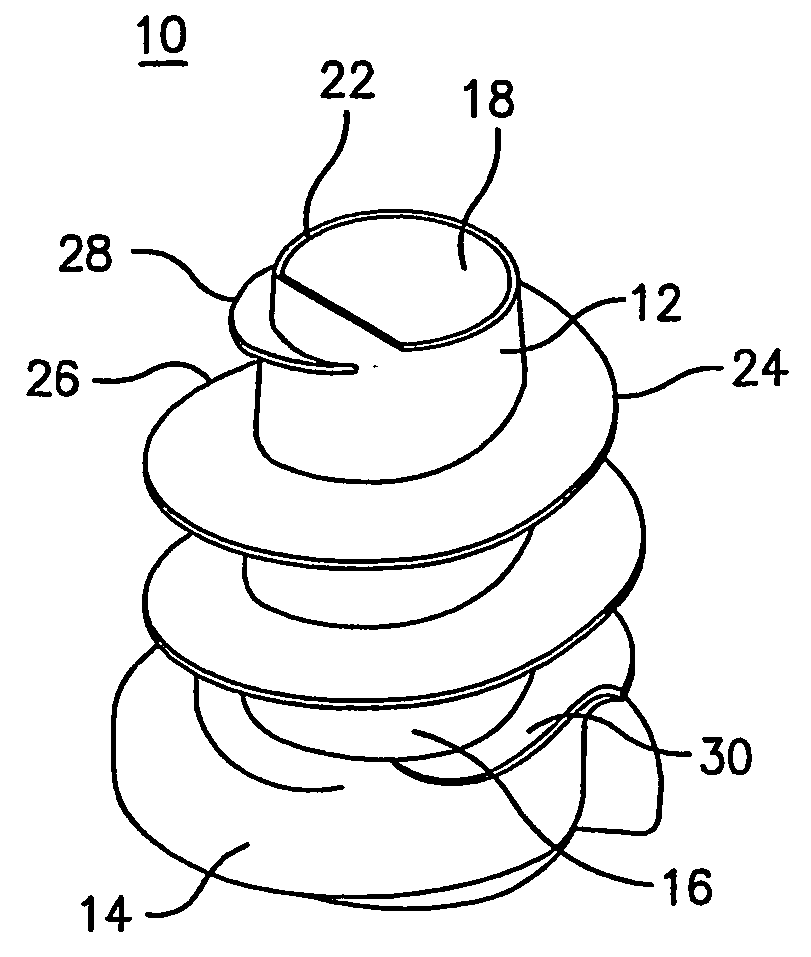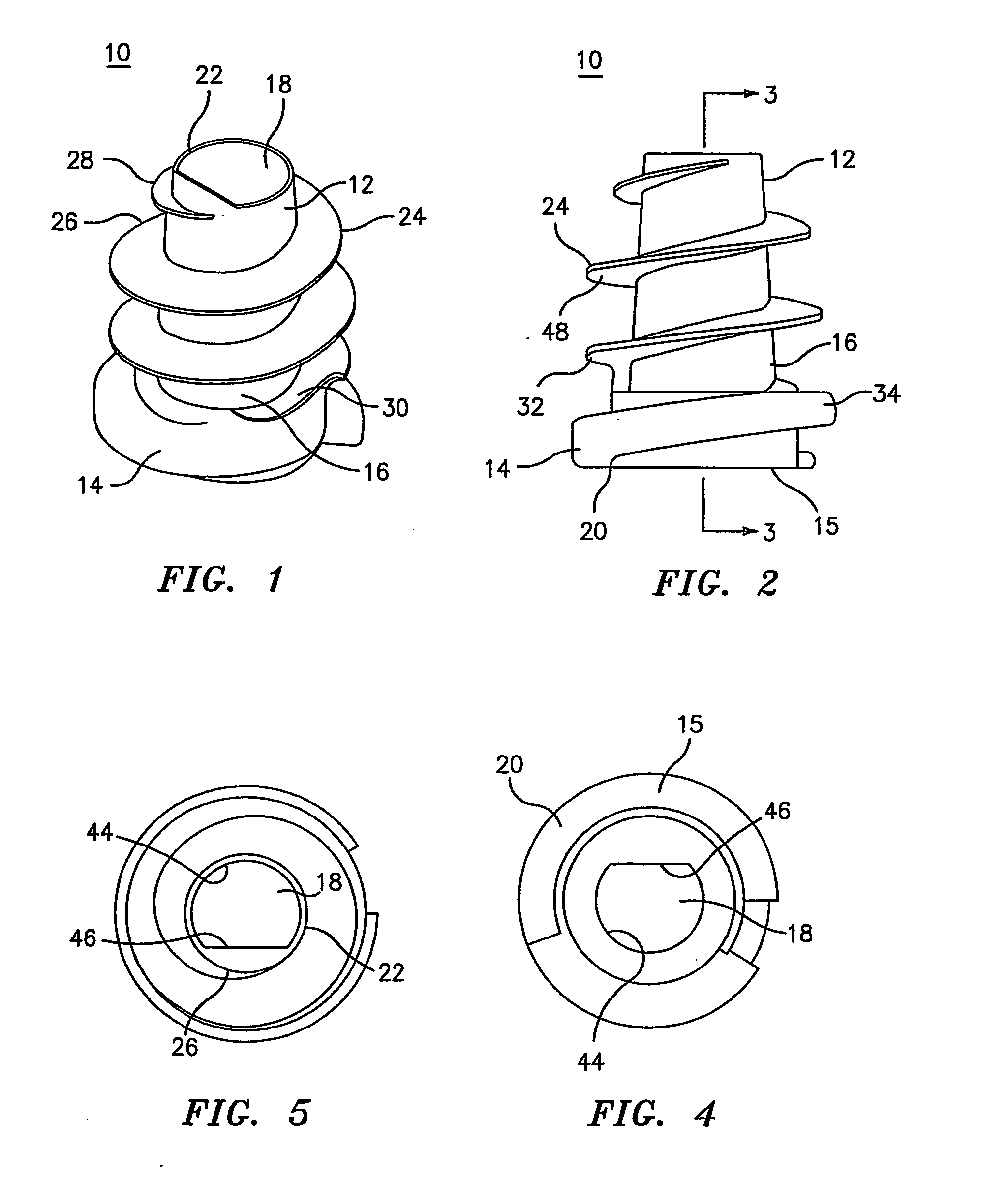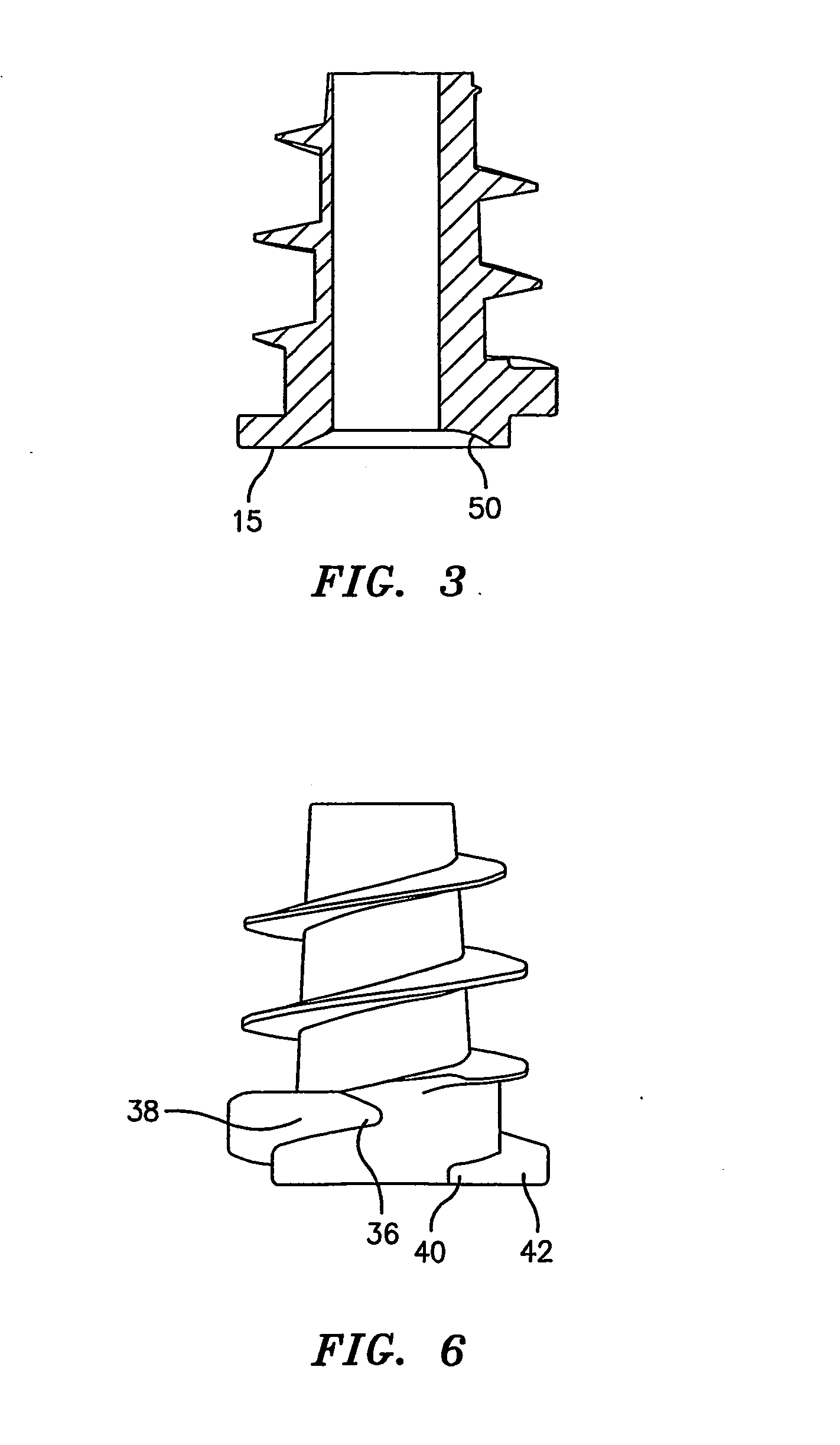Hernia mesh tacks
a mesh and hernia mesh technology, applied in the field of surgical tacks, can solve the problems of inconvenient removal of many of the tacks, injuring the tissue, damage to the hernia mesh, etc., and achieve the effect of facilitating insertion in tough tissue and increasing the drive surface area
- Summary
- Abstract
- Description
- Claims
- Application Information
AI Technical Summary
Benefits of technology
Problems solved by technology
Method used
Image
Examples
Embodiment Construction
[0039] Referring to FIGS. 1 and 2, there is disclosed a hernia tack suitable for atraumatic insertion through hernia mesh and into human tissue. Hernia tack 10 generally includes an elongated barrel portion 12 having a cap or head 14 at a proximal end 16 of barrel portion 12. Barrel portion 12 extends distally from head 14 and is preferably tapered. A detent may be formed in a proximal surface 15 of head 14 for receipt of driving instrumentation. Preferably barrel portion 12 and head cap 14 define a throughbore 18 therethrough. Throughbore 18 extends from a proximal end 20 of head cap 14 to a distal end 22 of barrel portion 12.
[0040] Preferably, distal end 22 is smooth or rounded off to avoid traumatizing tissue and damaging the mesh as tack 10 is installed. Distal end 22 forms an atraumatic transition with the tip of a drive rod to prevent tearing of mesh and tissue during insertion. Tack 10 can be formed of any biocompatible material and preferably of a material that is absorbabl...
PUM
 Login to View More
Login to View More Abstract
Description
Claims
Application Information
 Login to View More
Login to View More - R&D
- Intellectual Property
- Life Sciences
- Materials
- Tech Scout
- Unparalleled Data Quality
- Higher Quality Content
- 60% Fewer Hallucinations
Browse by: Latest US Patents, China's latest patents, Technical Efficacy Thesaurus, Application Domain, Technology Topic, Popular Technical Reports.
© 2025 PatSnap. All rights reserved.Legal|Privacy policy|Modern Slavery Act Transparency Statement|Sitemap|About US| Contact US: help@patsnap.com



